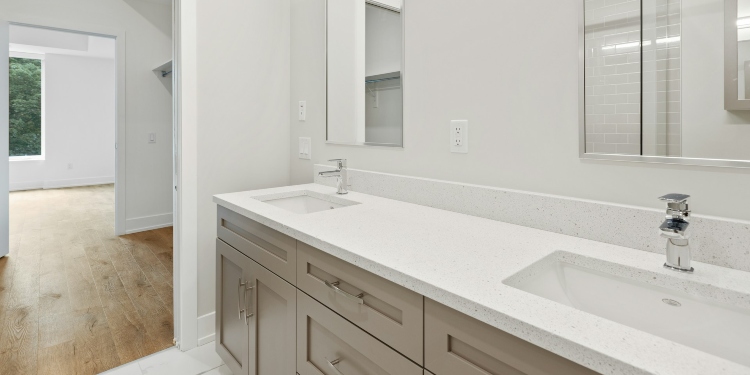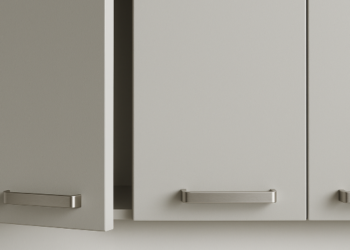The bathroom is one of the most dangerous places in the home for seniors, with slippery floors, high-step access to bath fixtures, and poorly designed spaces contributing to many preventable accidents. Whether you’re accommodating an elderly guest, future-proofing your home, or creating a safer environment for a live-in parent, a few thoughtful adjustments can make a world of difference.
This guide will walk you through practical, accessible solutions like installing grab rails, using walk-in showers, and why wet rooms could be the ultimate choice for safety and style.
Why Accessible Bathrooms Matter
Designing a bathroom with accessibility in mind goes beyond aesthetics. It’s about independence, dignity, and ensuring a safe environment where seniors can move confidently. Did you know that falls are one of the leading causes of injury and hospitalisation among older adults? A safe bathroom starts with addressing these hazards while maintaining a comfortable and inviting space.
1. Install Grab Rails for Stability
Tiled surfaces and wet floors make bathrooms a hotspot for slips and falls. Grab rails are a simple, effective way to provide stability where it’s needed most.
Where to Add Grab Rails:
- Beside the toilet for assistance sitting and standing.
- Inside the shower or bath for extra support during entry, exit, or general movement.
- Near towel racks, where people often reach for balance.
Opt for durable, rust-resistant rails that complement your bathroom’s design.
2. Say Yes to Walk-In Showers or Wet Rooms
Climbing into a traditional bath is challenging for seniors and significantly increases the risk of slipping. Switching to a walk in shower eliminates the need for high steps, providing seamless access.
Want to take it a step further? Wet rooms for disabled individuals can revolutionise your bathroom into a fully waterproof space with level flooring for easy mobility. This makes it ideal for wheelchair users or those who need more room for assistance. Combine this with non-slip tiling to dramatically reduce the risk of falling.
3. Upgrade to Walk-In Baths
If a bath is a must-have, consider installing a walk-in bath. These feature a built-in door, allowing users to step in without climbing over edges. Many models also come with seating, reducing strain and improving comfort. While these are a pricier option, they’re a worthwhile investment for those with specific bathing needs.
4. Invest in a Raised Toilet
Sitting down and standing up from a standard toilet can be difficult for seniors, especially those with limited leg strength. Raised or comfort-height toilets reduce the distance, making standing up less strenuous. This simple change can make daily life much easier.
For additional help, you can include grab rails or consider a toilet seat with armrests for support.
5. Widen Doorways for Accessibility
A standard bathroom doorway may be too narrow for individuals using wheelchairs or walking aids. A wider doorway not only ensures accessibility but also provides a more open and spacious look to your bathroom.
Tip: Ensure the floor surfaces inside and outside the bathroom are level to avoid trip hazards.
6. Don’t Overlook Lighting
Shadows and dim light can make navigating the bathroom exceptionally hard for older adults. Bright, evenly distributed lighting is key to minimising these risks. Consider motion-activated lights for extra convenience during nighttime visits.
7. Try Tactile and Non-Slip Flooring
The slick surface of many bathroom tiles adds to the slipping risk, especially when combined with water. Non-slip tiles or textured vinyl can significantly improve grip. Rugs should also have non-slip backings to prevent them from sliding when stepped on.
8. Use Single-Lever Taps
For seniors with arthritis or limited hand strength, traditional twist-knob taps can be difficult to manoeuvre. Single-lever taps provide an easy-to-use alternative that requires minimal effort to adjust temperature or water flow.
9. Add Shower Seating
A small bench or foldable shower seat is an excellent addition for those who tire easily or have mobility challenges. Not only does it make bathing more comfortable, but it reduces the risk of slipping while trying to balance.
10. Storage That Keeps Everything Within Reach
Reaching for items on high shelves or bending down to the floor is a common cause of accidents. Ensure everyday essentials like soap, shampoo, and towels are stored at an accessible height. Consider wall-mounted storage solutions or pull-out shelves for ease of use.
Create a Safer Space Today
Making a bathroom safer for seniors doesn’t mean sacrificing on style. By incorporating smart designs and thoughtful features, your bathroom can be as safe as it is inviting.
Whether it’s installing grab rails or upgrading to a wet room, small tweaks create a big difference in ensuring safety and comfort. Considering a more in-depth renovation? Work with accessibility experts to design a bathroom that fits both your current and future needs.
And here’s a thought to leave you with: While these changes are incredibly helpful for seniors, they also benefit people of all ages. After all, accessibility is about inclusivity and preparing for the future.
Transform your bathroom today, and enjoy peace of mind knowing it’s a safer place for everyone.
David Prior
David Prior is the editor of Today News, responsible for the overall editorial strategy. He is an NCTJ-qualified journalist with over 20 years’ experience, and is also editor of the award-winning hyperlocal news title Altrincham Today. His LinkedIn profile is here.












































































